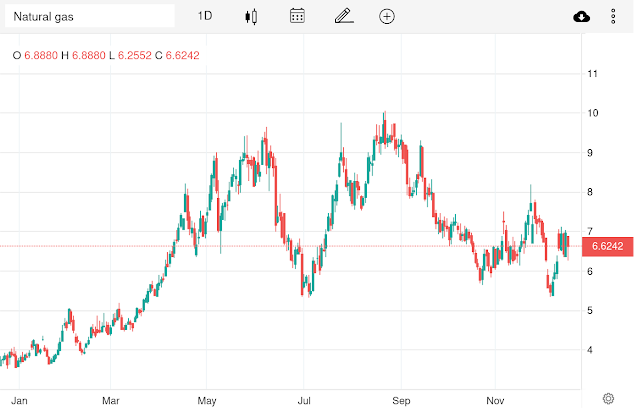Summary:
On Tuesday, the annual inflation rate in the US showed signs of slowing down, for a fifth straight month to 7.1% in November of 2022, the lowest since December last year, and below forecasts of 7.3%. The markets rallied after such good news.
However, on Wednesday, the Federal Reserve raised the fed funds rate by 50bps. It was the seventh consecutive rate hike. During the speech and in the Q&A session, Powell insisted in keeping "a stance of monetary policy that is sufficiently restrictive to return inflation to 2%". The Fed now expects interest rates to reach 5.1% next year, 4.1% in 2024, and 3.1% in 2025, higher than previously indicated. Meanwhile, GDP growth projections were revised higher for this year (0.5% vs 0.2%) but lowered for 2023 (0.5% vs 1.2%) and 2024 (1.6% vs 1.7%). Inflation forecasts were revised higher for 2022 (5.6% vs 5.4%), 2023 (3.1% vs 2.8%) and 2024 (2.5% vs 2.3%).
After the FOMC meeting and speech on Wednesday, the markets tanked. Will there be a Christmas rally next week?
Next week, in the US, the PCE price index, personal income and spending, CB, and the University of Michigan's consumer sentiment and durable goods orders will be released.
Economic data source: Trading Economics
Some Realistic Commentary About the Crypto Space
Video: Bitcoin Bottom Is Not $13K It’s Worse Than That Now, Says Expert That Called $17K
Channel: Stansberry Research
About Government Intervention on Inflation and the Economy
Video: Bad News on Inflation Should Not Be a Surprise - Ep 861
Channel: Peter Schiff
FTX, Metals, Resource Stocks
Video: Why The FTX Meltdown Matters To You | Rick Rule
Channel: Liberty and Finance
A Walk Around the Markets
US equities closed lower on Friday, notching a second consecutive week of losses as fears mounted that aggressive rate hikes by the Federal Reserve could tip the world's largest economy into a recession. The Dow was down 282 points while the S&P 500 fell 1.1% and Nasdaq Composite shed almost 1%. For the week, all three major US stock indexes were down over 1%. Stocks have been under heavy pressure since Wednesday after the Federal Reserve reaffirmed its commitment to raise interest rates further and keep them higher for longer. Adding to the gloomy outlook was a sharper-than-expected decline in business activity in December as new orders sank to the lowest level in just over 2-1/2 years. On the positive side, Facebook parent Meta Platforms jumped more than 4% after J.P. Morgan upgraded the stock to "overweight" from "neutral.".
Silver traded higher in the middle of the week but has tumbled on Thursday. Price is essentially unchanged relative to the previous week. Silver futures and options contracts are used by mining companies, fabricators of finished products, and users of silver-content industrial materials to manage their price risk. As a precious metal, silver also plays a role in investment portfolios. The largest industrial users of silver are the photographic, jewelry, and electronic industries. The biggest producers of silver are: Mexico, Peru and China followed by Australia, Chile, Bolivia, United States, Poland and Russia.










Comments
Post a Comment